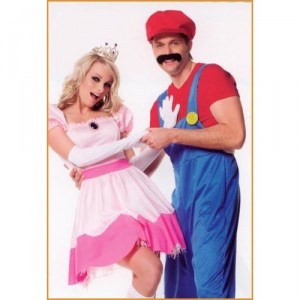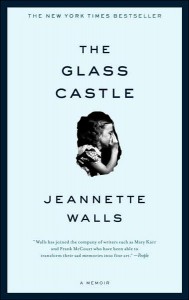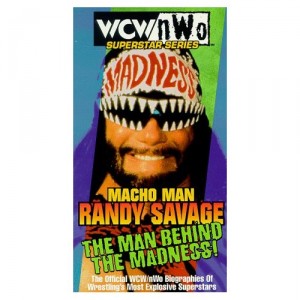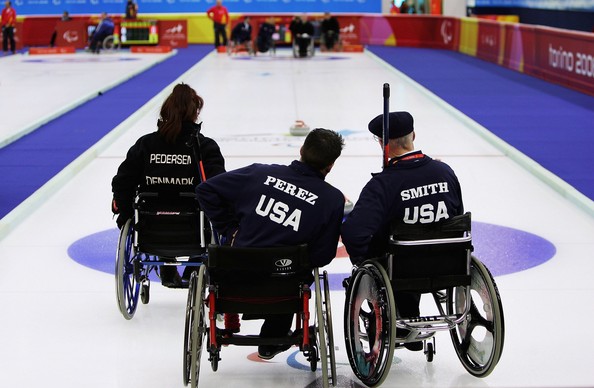Happy anniversary, Johnchidleyhill.com!
Last Tuesday was the one-year anniversary of this blog's creation. For the past year this website has been a place to work on my writing, talk about things that interest me and show off my various professional projects.
I’ve been really pleased with this site and with how my career has developed over the past year. In particular, I’ve been touched by all the positive feedback I’ve received from people. I’m always surprised with how often friends or family mention that they love my writing here. It’s nice to see my hard work appreciated like that.
To me, the most incredible thing about this blog is all the people who’ve read my posts that I don’t know personally. According to my metrics, I’ve had 16,688 unique visits and counting. When I started this site a year ago I never thought I’d have that many visitors.
Thank you for all your support.
To celebrate this blog’s anniversary I thought I’d list the top five most popular articles on this website.
But before I do, I want to mention two in particular: "Bill Simmons’ Twitter idea might be a game-changer" and "Sandwich Review: KFC’s Double Down". These two posts are the two biggest spikes in readership I’ve had over the course of the year. In both cases my readership doubled or even tripled the day they were posted.
Here are the top five most read articles of JCH.com over the past 365 days, in ascending order:
5. "Bill Simmons’ Twitter idea might be a game-changer" – May 14th, 2010
As mentioned above, this article was one of the first big spikes in traffic this blog saw. Collecting a total of 202 unique page views since it was first published, this was my first serious stab at discussing the evolving role of media in sports.
“An interesting experiment occurred on Thursday night as the Boston Celtics eliminated the Cleveland Cavaliers from the National Basketball Association’s Eastern Conference semifinal with a 94-85 victory.
As league MVP LeBron James stepped up to the free throw line in the second half the Boston crowd began to chant “New-York-Knicks! New-York-Knicks!”, referring to one of the more moribund destinations that the soon-to-be free agent might head to in the offseason.
Later, the Celtic faithful began to chant “MSG! MSG!”, the acronym for Madison Square Gardens, the home of the Knicks.
This was all part of a grand scheme concocted by ESPN.com’s Bill Simmons, Boston’s most famous sports fan, and it may just revolutionize spectatordom.”
4. "Sandwich Review: KFC’s Double Down" – Oct. 19th 2010
I’ve reviewed a lot of things on this blog: comics, books, the occasional movie and even some baseball stadiums. But my look at the controversial Double Down sandwich at KFC was the first and last crack at being a foodie you’ll ever seen in this space. That review was particularly timely, earning some buzz and a spike in readership, eventually tallying 214 reads.
“It took months to make it possible, but yesterday I finally ate a Double Down from KFC.
Normally, reviewing a sandwich is not my bag. After all, my good friend and neighbour John already does a bang-up job over at In Search of a Sandwich. Why would I want to compete?
But the Double Down - KFC’s bacon, sauce and cheese sandwich that substitutes the bread for pieces of deep-fried chicken - transcends a normal sandwich. Just as the Double Down pushes the envelope of sandwich technology, I must expand my blogging horizons for this fast food delicacy.”
 3. "Three ice dancing performances I’d like to see" – Feb. 23rd 2010
3. "Three ice dancing performances I’d like to see" – Feb. 23rd 2010
I blogged throughout the Vancouver Olympics, usually in response to a significant event at the games. By far, the most popular of these pieces was my suggestion for three ice dancing routines that would set the performers apart from the cliché-laden pack.
When I posted this link on Twitter it was quickly picked up and retweeted by many of my friends, making it as close to viral as this site has ever been. That buzz resulted in a total of 313 views to date.
Oddly, and somewhat creepily, “Princess Peach” is by far the most popular search on this website, all thanks to this article.
“Like many Canadians, I was thrilled by Tessa Virtue and Scott Moir’s gold medal ice dance performance on Monday night.
I would never call myself a figure skating or ice dancing fan – I find that too often the judge’s decisions are political – but I was impressed with the athleticism and technique of all the dancers in the competition.
What did not impress me was their lack of creativity or originality. Most of the performances bled together. Virtue and Moir stood above the rest of the competition because they didn’t rely on clichéd music like the themes from the Phantom of the Opera or Requiem for a Dream. They weren’t covered with sequins and feathers. Their performance truly distinguished them from the rest of the pack.”
2. "Toronto has two strikes against it for most professional athletes" – Mar. 9th 2010
I wrote this piece between Roy Halladay’s departure to the Philadelphia Phillies and the National Basketball Association’s free agency period that saw Chris Bosh take his talents to South Beach.
It’s a topic I’d like to revisit sometime, especially since one of my commenters pointed out that my math on the differences in taxes between the United States and Canada might be wrong. Despite the possible error, this post has been read 417 times.
“This summer could be particularly heart-breaking for fans of the Toronto Raptors as they face the prospect of forward Chris Bosh, arguably the best player the team has ever seen, leaving the city as a free agent.
Toronto Blue Jays fans can sympathize with their basketball neighbours – this summer they lost ace Roy Halladay in a lopsided trade with the Philadelphia Phillies and Seattle Mariners.
It’s a familiar story for Torontonians. One of their teams will draft a player who becomes a star, but the franchise player eventually begins to grumble and complain about greener pastures, eventually demanding a trade or letting their contract expire and moving on via free agency.”
1. "Book Review: The Glass Castle by Jeannette Wells" – Sept. 15th 2010
 I try to review every book that I read, even if it doesn’t have anything to do with the general themes of this blog like sports and pop culture. But the incredible success of my review of the Glass Castle shows that maybe, just maybe, I should review literally every single thing I experience. Not just books, but music, food, furniture, public transportation, whatever. Although it is the second-most recent post on this list, it’s garnered far and away the most views at 1,106 and counting.
I try to review every book that I read, even if it doesn’t have anything to do with the general themes of this blog like sports and pop culture. But the incredible success of my review of the Glass Castle shows that maybe, just maybe, I should review literally every single thing I experience. Not just books, but music, food, furniture, public transportation, whatever. Although it is the second-most recent post on this list, it’s garnered far and away the most views at 1,106 and counting.
“I never thought that I’d enjoy Jeannette Walls’ "the Glass Castle", but I was wrong.
On the surface, it looked like it was more for stay-at-home moms. It was one of Heather’s Picks at Chapters-Indigo Bookstores and reeked of Oprah’s Book Club. But once I started reading it I appreciated Walls’ writing and was moved by her story.
Like Frank McCourt’s ultra-popular Angela’s Ashes, the Glass Castle is a dark memoir about a dysfunctional family crippled by the father’s alcoholism and the mother’s loose grip on reality.”
Book Review – The Book of Basketball
 The Book of Basketball seemed like the perfect book for me, a natural fit.
The Book of Basketball seemed like the perfect book for me, a natural fit.
But Bill Simmons’ magnum opus, although entertaining and somewhat informative, fell short of my expectations.
You see, like most Canadians, I don’t know a lot about basketball. Sure, I watch maybe a game per week, I know the big name players and I certainly respect their athleticism and the skill necessary to play in the National Basketball Association.
But that level of interest pales in comparison to my obsession with hockey. That’s just the sad truth: In Canada, basketball always plays second fiddle to hockey. From an early age we’re all ingrained with an understanding of hockey that fuels our fascination.
It’s hard for any sport, especially one that runs at roughly the same time as the National Hockey League, to gain any kind of popular traction amongst Canadians.
What it boils down to for me is this: if you gave me a TV with only two channels, one broadcasting the classic 1986 NBA Finals with Magic Johnson’s Los Angeles Lakers facing Larry Bird’s Boston Celtics and the other showing a pre-2004 lockout game between the New Jersey Devils and Minnesota Wild, I’d probably end up watching the hockey.
However, I’m always trying to broaden my horizons, especially when it comes to sports and writing, and so I want to expand my basketball knowledge base.
Further, Simmons has always impressed me as an imaginative writer who can inform and amuse. Anyone who’s read his blog or followed him on Twitter knows he has a deep and abiding passion for basketball, so it seemed like reading his tome would be the perfect way to familiarize myself with the game.
There’s no denying that I learned a lot from Simmons’ 736 page treatise on every imaginable detail of professional basketball. His meticulously researched book does a lot to explain the evolving styles of play as well as the different personalities that have made up the NBA and American Basketball Association.
His lengthy footnotes and parenthetical asides made me laugh out loud and his pop-culture references are always on point. He’s got a gift for keeping sections that would otherwise be deathly boring fun and fresh. Unfortunately, they also add about an extra 100 pages to an already lengthy book.
That’s just one symptom of this book’s fatal flaw: it is poorly edited. Simmons should’ve been reined in to try and keep the book and more manageable length.
Further, a more consistent naming protocol should have been used. Player’s first names, last names and nicknames are used interchangeably from paragraph to paragraph, sometimes sentence to sentence. Although it can lead to some echoes in the writing, sticking to a standard would have lowered the word count - and in a book this big that could end up cutting some pages – and would have made the book more accessible.
This is where the book ultimately failed me.
As a survey of the history and players of professional basketball, the Book of Basketball seemed like the ideal entryway for a novice fan trying to learn about the sport. But it seems as though Simmons never really decided who his target audience was going to be, and so his narrative swings from being explanatory and appropriate for the new fan, to detailed and filled with in jokes only a long-time NBA fan would get.
Writing a book for the sophisticated fan is fine, but it should be advertised as such and be consistent in its level of accessibility. Unfortunately, the Book of Basketball is all over the map in comprehension, making it a frustrating read.
Bill Simmons’ Book of Basketball is funny and smart, but could’ve used a more firm editorial hand to rein in some of the author’s lengthier footnotes and asides to make a slightly more concise book that is accessible for all readers.
When predictions turn ugly
Whether it’s picking a champion before a season begins or presaging the outcome of a draft, there’s a good chance a sports writer is setting themselves up to fail when they make predictions.
It’s inherent in sports journalism. The predictable nature of a season naturally lends itself to playing oracle.
You know there will be a Most Valuable Player award and even at the start of the season you can narrow it down to three or four likely candidates. Guessing who it’s going to be is easy copy and it gets the consumers involved in the debate as well. It’s too tempting to pass up.
Of course, more often than not, those predictions are way off and then you have readers sending you crank emails lecturing you on how you’re the wrongest wrong who ever wronged.
Hindsight is 20-20 and those bold statements, predictions of future success (or struggles) and deep explanations embedded in an article can sour quickly, ruining an otherwise fine piece of work.
I touched on this before in my review of SI’s Great Baseball Writing. Throughout that collection there are passages or even entire articles from the late 1990s and early 2000s that try to explain the sudden power surge late in the careers of Barry Bonds, Mark McGuire and Sammy Sosa.
Awkward.
This is at the heart of the Sports Illustrated or EA Sports cover curses – the subject is chosen because of what they’re expected to achieve and, more often than not, they disappoint because they’re being held up to more intense scrutiny or our expectations (raised by the hype of being on the cover) are unrealistic.
Right now I’m reading Bill Simmons’ Book of Basketball and I’m making my way through his lengthy Pyramid section where he ranks the top 96 professional basketball players of all time.
It’s an entertaining and informative piece, until you get to the subchapter on Lebron James. Here’s a few paragraphs of the book that, in turn, were pulled from Simmons’ April 15, 2009 posting where he makes the case for James as NBA MVP.
“Not since Magic Johnson has a superstar doubled as such a galvanizing teammate. If there's an enduring image of the '08-09 season, it's the way LeBron stamped his personality on everyone around him. They orchestrate goofy pregame intros (my favorite: the team snapshot), trade countless chest bumps, giggle on the sidelines, hang out on road trips and support each other in every way. What's telling about LeBron's in-traffic dunks -- and he unleashes them more frequently than anyone since Dominique -- is how he seeks out his bench for feedback, and even better, how they give it to him. It makes the forced camaraderie of the Lakers seem glaring. If you want to watch a team that pulls for each other and follows the lead of its best player, watch Cleveland.
And if you're a Cavs fan trying to talk yourself into LeBron staying after 2010, your best chance is this: Through 24 years, LeBron has proven to be an inordinately devoted guy. When you're with him, you're with him. The upcoming documentary (supposedly superb) about his high school years bangs this point home. So does the fact that he jettisoned his agents and surrounded himself with high school buddies. So does everything that happened this season. He's as good of a teammate as a player. The more I watch him, the more I wonder if such an intensely loyal guy would ever say, "Thanks for the memories, everybody," dump his teammates, dump his hometown and start a fresh life elsewhere. Although he isn't surrounded by the most talented players right now, collectively, it's a team in the truest sense, with a devoted set of appreciative fans, and maybe that's all LeBron James will need in the end.
I thought he was a goner four months ago. I think he's staying now. Regardless, he's our Most Valuable Player for 2009. It won't be the last time.”
Although Simmons’ schtick is enthusiastic hyperbole, I do believe that he was very sincere in his belief that James is a loyal, team-oriented player and a true son of Ohio. And, credit where it's due, the Sports Guy was right that James would win NBA MVP in 2009 and that it wouldn't be his last.
But Simmons was wrong about Lebon's character. I think it's fair to say that the Decision, the hour-long ESPN special where Lebron announced that he was “taking his talents to South Beach” proved that as it ripped out the hearts of Cleveland Cavaliers’ fans and tarnished Lebon's image.
It turned out that James is not particularly loyal, that his high school friends/managers totally misread the impact of his television special and that the Lebron camp are so out of touch with his fanbase that they signed off on this ad for Nike, rubbing salt in the wound.
Yikes. Knowing what we know now, reading Simmons' glowing praise of Lebron makes me cringe.
In fairness to Simmons, he did change his mind as the free agency deadline loomed this past summer, backpedalling from his earlier belief that James was going to stay in Ohio as new information came to light.
And hey, it’s not like I haven’t made my own terrible calls. Long-time readers of this blog just need to think back to my March Madness predictions from this past spring, or my Canadian Hockey League playoff predictions from about the same time to see that I’m no seer myself.
I just want to underscore just how tricky this predictions game can be. It’s a wrinkle that makes sports journalism just a bit tougher, a little more unpredictable and definitely a lot more uncomfortable for columnists.
Blog posts, books, magazine covers, whatever, are all created in a particular moment but then stand forever.
Unfortunately, sports journalists are often called upon to make predictions, foresee the future and the incorrect guesses last much longer than the actual outcome ever does. It can turn good copy bad, real fast and it can also make me put down a book for a few minutes to reflect on how fleeting insight can be.
Bill Simmons’ Twitter idea might be a game-changer
An interesting experiment occurred on Thursday night as the Boston Celtics eliminated the Cleveland Cavaliers from the National Basketball Association’s Eastern Conference semifinal with a 94-85 victory.
As league MVP LeBron James stepped up to the free throw line in the second half the Boston crowd began to chant “New-York-Knicks! New-York-Knicks!”, referring to one of the more moribund destinations that the soon-to-be free agent might head to in the offseason.
Later, the Celtic faithful began to chant “MSG! MSG!”, the acronym for Madison Square Gardens, the home of the Knicks.
This was all part of a grand scheme concocted by ESPN.com’s Bill Simmons, Boston’s most famous sports fan, and it may just revolutionize spectatordom.
Earlier in the week, Simmons created a Twitter account called CelticsChants for the express purpose of organizing chants for the decisive Game 6 of the Cleveland-Boston series in an attempt to get under the skin of James and affect the outcome of the game.
“Even if 500 people at the game were following that account, wouldn't that be enough fans to get those chants rolling so everyone in the stadium joined in?” said Simmons in an article posted on Tuesday. “Just for fun, I'm trying this for Game 6 in Boston.”
It seemed to work.
Although James led Cleveland with an impressive triple-double (27 points, 19 rebounds and 10 assists), he seemed distracted by the taunts. He was an inefficient shooter, making just eight of 21 field goal attempts and sinking nine of 12 from the free throw line.
Worse yet, the rest of the Cavaliers seemed rattled by the crowd and the thought that this might be James’ last game with the team. Cleveland shot .384 from the floor and .681 on foul shots.
By the final minute of play the Cavs looked listless and totally uninterested in playing. There’s no doubt that they were out-played by the Celtics, but the stinging heckles from the crowd was driving them to distraction.
Simmons certainly seemed pleased with himself as the game wound down.
“Mission accomplished - the last chant was deafening. Thanks so much to everyone who participated + spread the word,” he said via the CelticsChants Twitter account. “Next up: Orlando.”
Perhaps more than anyone else in journalism, Simmons understands new media like blogs, podcasts and Twitter. It’s not surprising that he’s come up with such an ingenious way of employing cell phones to influence games.
It’s the most organized a crowd has been since the 1980s when hooligan supporters of Chelsea F.C. used walkie-talkies and binoculars to direct their attacks against the supporter mobs of other teams.
Obviously, it’s much less malevolent and hopefully more likely to catch on than the English ploy. With sports fans increasingly tech savvy, it’s easy to imagine that this innovation catching on with other teams.
There’s no doubt that Game 6 of the Cleveland-Boston series was an exciting game. LeBron James may have played his last game with the Cavaliers and the Celtics are in the midst of a surprising playoff run. But in the long run, the most interesting development may be that Bill Simmons has added a new wrinkle to the NBA that might outlast the results of the game itself.
March Madness: Day 1 – Ignorance is bliss
 One of the most peculiar periods in the Canadian sporting year is the last two weeks of March.
One of the most peculiar periods in the Canadian sporting year is the last two weeks of March.
That’s when, like everyone else in the civilized world, Canadians become obsessed with the NCAA’s Division I basketball tournament. However, unlike our neighbours to the south, we can come at it from an oddly objective place.
Let me explain.
Obviously, there are no Canadian schools in the tournament. There are rarely Canadians to root for, either. Like following the National Football League we’re left to our own devices to figure out which teams to pick. We are unfettered by any kind of loyalty or regional bias.
Really, in general, Canadians are blissfully ignorant of college basketball until about early March. There’s little coverage on Sportsnet or TSN. Only hardcore basketball fans who seek out games on the Score or online have any real knowledge of the NCAA game. Everyone else gleans what they can from American shows like Pardon the Interruption or Around the Horn. Our focus is, and always will be, hockey.
Does that stop Canadians from participating in March Madness pools? Not even a little. Practically everyone I know has at least one bracket, and suddenly basketball is on all kinds of TV channels. After all, there is no better way to while away the time once your NHL team is eliminated from the playoffs.
My only NCAA allegiance is to Syracuse University Orange. Not because of Carmelo Anthony, but because of their lacrosse team. After all, that’s where Gary and Paul Gait went. Not to mention the Powell boys. Also, it’s kind of local to Toronto. I guess that's nice.
Aside from that small preference for the Orange, I can enjoy the tournament bias free. Heck, I’m even indifferent to Duke University which, according to ESPN’s Bill Simmons, people hate.
Personally, I enjoy the fact that as a Canadian I can operate from a point of objective ignorance: It means that I rarely over-think things. My judgement is never clouded by preference or conflicting sources of information.
If 75% of users are picking a team online, it sounds good to me. I’ll never be tempted to pick an underdog, since, hey, I don’t know anything beyond the seeding. Historical trends? Don't know, don't care. It’s wonderfully liberating.
My strategy is to pick teams I’ve heard of, relying on the assumption that if they're on my radar up here in Canada, they must be good. Failing that, I go with the higher seed. If two well known teams meet at some point in my bracket, I follow the lead of my fellow online users. When I feel particularly daring I’ll take an underdog (usually a 12 seed over a five) but that’s as wild as I get.
It’s actually a pretty good system. It leaves me open to upsets, but that’s rarely a problem beyond the Sweet 16.
Now I can just sit back and enjoy the show, along with my free health care. The beauty of being Canadian.
Paralympics off to a poor start before they can even begin
 In the wake of the very successful Vancouver Olympics there’s a nice afterglow surrounding Canada’s amateur sports. Events like downhill skiing and curling are given more prominent airtime on television and commentators like ESPN’s Bill Simmons are still talking about the 2010 Games.
In the wake of the very successful Vancouver Olympics there’s a nice afterglow surrounding Canada’s amateur sports. Events like downhill skiing and curling are given more prominent airtime on television and commentators like ESPN’s Bill Simmons are still talking about the 2010 Games.
It’s little wonder. After all, Canada finally got the monkey off its back when Alex Bilodeau won a gold medal, the first time a Canadian has won the top prize on home soil. Canadians then went on to win 13 more gold medals, an Olympic record for the host nation of a winter games, culminating in a dramatic 3-2 overtime victory over Team USA in men’s hockey.
The closing ceremonies struck the right note as well. It was funny, charming and distinctly Canadian, provided you turned the TV off as soon as Nickleback took to the stage.
But all that goodwill is going to be wasted by tonight’s Paralympic Opening Ceremony which you will be able to watch.... nowhere. See, neither CTV or NBC are showing the ceremony live. Instead, they’re going to air the “hit” TV show, Medium, and run the tape of the ceremonies on Saturday.
I understand that the Paralympics don’t have all the glitz and glamour of National Hockey League players or the sex appeal of Lindsay Vonn or the Curlougar Cheryl Bernard, but surely they deserve to have their opening ceremonies live to air.
Can the demand for the latest and greatest episode of Medium really be that high?
To me, the Paralympics do way more to capture the spirit of the Olympics Movement. Their precursor was the Stoke Mandeville Games, organized by Dr. Ludwig Guttmann in 1948 during the London Olympic Games. Orginally, they were an exercise for British World War II veterans with spinal conditions. The hope was that the competition would motivate them to stay active despite their handicap.
The first official Paralympics were held after the 1960 Olympics in Rome with a broadened scope that included anyone with a physical disability or vision impairment. They focused on the participants’ athletic achievements and fitness for the physically disabled around the world.
That is what the Olympics should be all about – the triumph of the human spirit, creating new heroes that people around the world can admire for their determination and will power. It’s a real shame that CTV and NBC have forgotten that lesson just two weekends after the Olympics ended.

